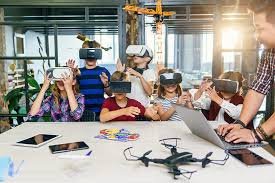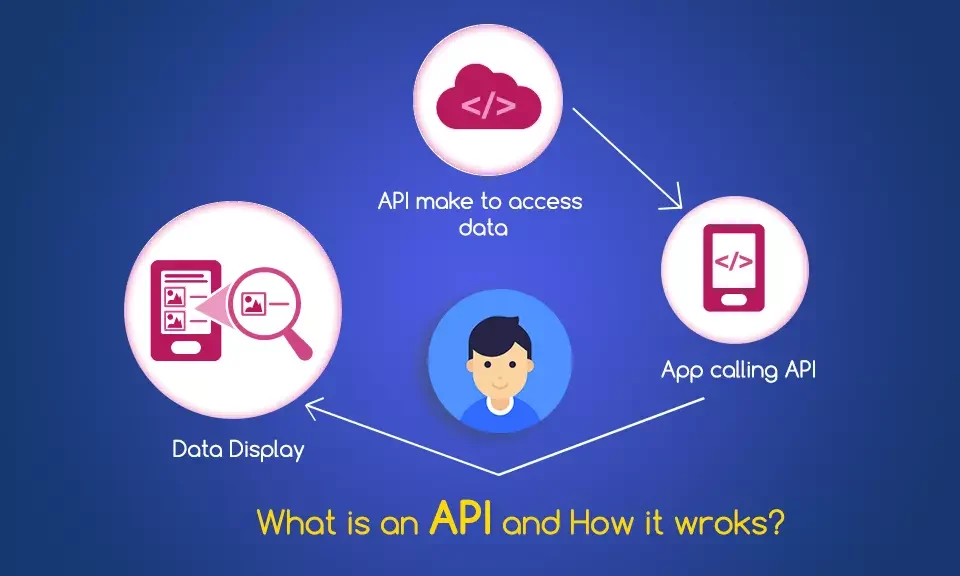
How to Build a Career in Digital Marketing as a Student
July 24, 2025
Turn Your Hobby into a Career While Studying
July 24, 2025How VR and AR Improve Learning
VR (Virtual Reality) creates a completely digital world using headsets like Meta Quest or Google Cardboard. Students can explore outer space, walk through historical monuments, or dive inside the human body to study anatomy.
AR (Augmented Reality) overlays digital elements onto the real world. Using AR apps, students can point their phone cameras at textbooks and watch 3D animations of molecules, planets, or machines appear on their desks. Apps like Google Expeditions have already introduced this concept in schools.
Traditional learning methods like textbooks and videos can sometimes feel abstract. VR and AR solve this by letting students “experience” concepts. Instead of reading about volcanoes, they can stand inside a virtual volcano and watch magma erupt safely. This immersive approach boosts understanding and long-term memory.
Moreover, students find technology exciting, sovirtual and augmented learning tools increase engagement and reduce boredom. Schools can gamify subjects, turning lessons into adventures, which motivates students to participate actively.
Examples of VR and AR in Schools
Schools worldwide are already adopting VR and AR to make education interactive. Science classes use VR for virtual chemistry labs, saving costs on lab equipment. History teachers use AR to make historical figures and monuments appear in classrooms, helping students “visit” the past. Geography lessons become exciting as AR maps bring mountains and rivers to life in 3D.
Chatrashala, through its educational blogs, also highlights how such technologies can prepare students for future careers in technology and creative industries.
Benefits of VR and AR for Students and Teachers
The benefits of immersive technologies are massive. Students learn faster and retain information better when they see and interact with content. Teachers can explain abstract concepts easily using immersive visuals. These tools also support remote learning — students who cannot visit museums or labs can explore them virtually from home.
Additionally, VR and AR encourage teamwork, as students can explore digital worlds together, solving challenges in groups. Platforms like CoSpaces EDU are excellent examples of collaborative virtual learning environments.
Challenges and the Future of VR and AR in Schools
While promising, implementing VR and AR comes with challenges. High equipment costs, teacher training, and strong internet requirements are hurdles for many schools. However, as technology becomes cheaper and more accessible, these barriers will reduce.
In the near future, students could attend virtual field trips worldwide, collaborate with peers in other countries, or even simulate career skills like surgery, architecture, or engineering in safe virtual settings. For more insights into future learning technologies, visit Chatrashala’s career guides.
Immersive and Experiential Learning
- immersive technologies transport students out of traditional textbook learning and into immersive experiences. With VR, students can walk through ancient cities, perform virtual science experiments, or explore the human body, all within a simulated environment.
- AR overlays interactive digital content onto the physical classroom, allowing learners to manipulate 3D objects like atoms or planets, deepening understanding through direct interaction.
Improved Engagement and Motivation
- VR and AR dramatically boost student engagement. Instead of passively absorbing information, students participate in lessons, collaborate, and problem-solve in virtual scenarios. Studies show that using VR and AR in classrooms leads to higher retention rates and increased focus—retention can reach as high as 75% with VR compared to just 10% for reading-based learning.
- The gamification aspect of AR, where learning includes interactive challenges or rewards, makes lessons more appealing and motivating for students.
Visualizing Complex and Abstract Concepts
- VR and AR allow teachers to bring difficult or abstract subjects—like molecular structures, historical events, or advanced physics—into easily understood, tangible experiences.
- Interactive AR textbooks and overlays can animate and contextualize lessons, making learning memorable and accessible.
Safe Exploration and Practice
- VR and AR provide safe environments to practice skills and experiment. Whether replicating hazardous science experiments or simulating complex machinery out of reach for most schools, students can practice hands-on learning with zero risk.
- VR is particularly valuable for special education, offering tailored simulations and controlled social scenarios, especially for autistic students.
Personalized and Inclusive Learning
- With VR and AR, learning materials can adapt to each student’s pace and preference, allowing slower learners to revisit topics, or advanced students to explore deeper content independently.
- AR supports inclusive learning by catering to students with various learning challenges, providing visual and auditory aids that make content accessible.
Extending Learning Beyond the Classroom
- Virtual field trips in VR let students “travel” to locations across the world, breaking financial and geographical barriers. AR takes this further, allowing real objects in a student’s home or classroom to become teaching tools as part of remote or blended learning environments.
- VR and AR open new avenues for interdisciplinary STEM education, creative arts, language learning, and more, making lessons relevant and future-oriented.
What Research and Schools Report
- Schools adopting VR and AR report increased student motivation, better academic outcomes, and enhanced collaboration. For example, students have participated in VR tours of space, severe weather simulations, and even experienced what it’s like to be a T-Rex, all resulting in total immersion and improved knowledge retention.
- Studies confirm that VR and AR promote deeper engagement, faster learning, and stronger emotional connection to content—key markers for effective education.
The Future: Broad Adoption and Growing Content
- As educational content libraries and teacher training in VR and AR grow, these tools are likely to become integral to digital classrooms worldwide, accessible not just to affluent schools but across regions.
- The potential is limitless: customized, collaborative, and emotionally engaging learning powered by VR and AR will redefine the classroom for the digital age.
Conclusion
VR and AR will radically change how we learn in schools by fostering immersive, interactive, and personalized learning environments. By helping students of all abilities visualize complex concepts, practice safely, and remain deeply engaged, VR and AR promise to prepare the next generation for a technologically advanced world.





